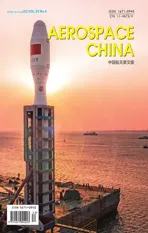Smart Dragon 3 Launch Vehicle System
2022-07-15ZHANGWenLIUJiajiaLIUWeiJINXin
ZHANG Wen ,LIU Jiajia ,LIU Wei ,JIN Xin
1 Beijing Institute of Astronautical Systems Engineering,Beijing 100076
2 China Academy of Launch Vehicle Technology,Beijing 100076
Abstract: The Smart Dragon 3 launch vehicle is a commercial carrier rocket based on the experience with the existing solid-fuel rocket Long March 11 to meet the growing market demand in China for launching commercial satellites to low and medium orbits.The carrier rocket has the characteristics of integral rocket storage,usable for both sea-and land-based launches,rapid response and cost-effectiveness.It is a solid carrier rocket with the largest lift capacity and the largest fairing envelope successfully flown domestically.This paper introduces the main technical index and overall scheme of the rocket.It also introduces the main difficulties encountered in the development of the rocket focusing on the aspects of the thermal emission at sea,the “Big hood” configuration and low commercial cost,as well as the interfaces with satellites.It is expected to provide a better commercial launch service for users through technological and economic integration.
Key word: Smart Dragon 3,scheme,difficulties,satellite interface,lift capacity
1 INTRODUCTION
As an important part of the space transportation system,solid launch vehicles have the characteristics including integral rocket storage,capable of liftoff both on the ground and at sea,and rapid response.They can provide a more flexible and cost-effective launch mode for medium and small satellites.In addition,they can also meet the needs for rapid response launches and flexible replacement for constellation networks.This type of launcher is widely favored in the military,civilian and commercial launch fields[1,2].Indicative with the United States,the world’s space powers have possessed a variety of solid launch vehicles with rapid launch capabilities.The solid launch vehicles have multiple launch modes including ground simple tower launch,highway mobile launch,air launch and submarine launch,and can quickly launch payloads into space from a few days to hours.
With the continuous development and progress of China’s solid power technology,China has the engineering foundation to develop a solid-fuel launch vehicle capable of sending over a payload of over 1 ton to the 700-kilometer sun-synchronous orbit.At the same time,China’s space transportation industry has entered an important period of historical opportunity.The demand for low-and medium-orbit satellites is strong,which gives birth to a new sector in the space economy.The commercial launch market is booming,exhibiting a new trend of diversified development[3].
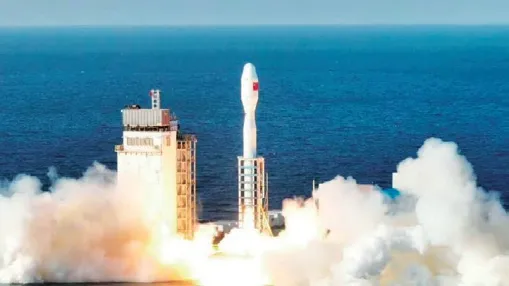
Figure 1 Maiden flight mission of SD-3
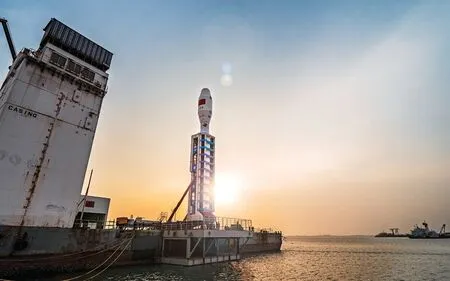
Figure 2 SD-3 standing on the launch ship
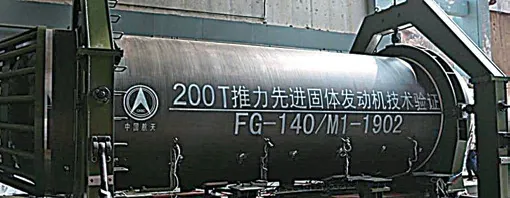
Figure 3 Ground test of the 200 t solid motor

Figure 4 Modular structural module
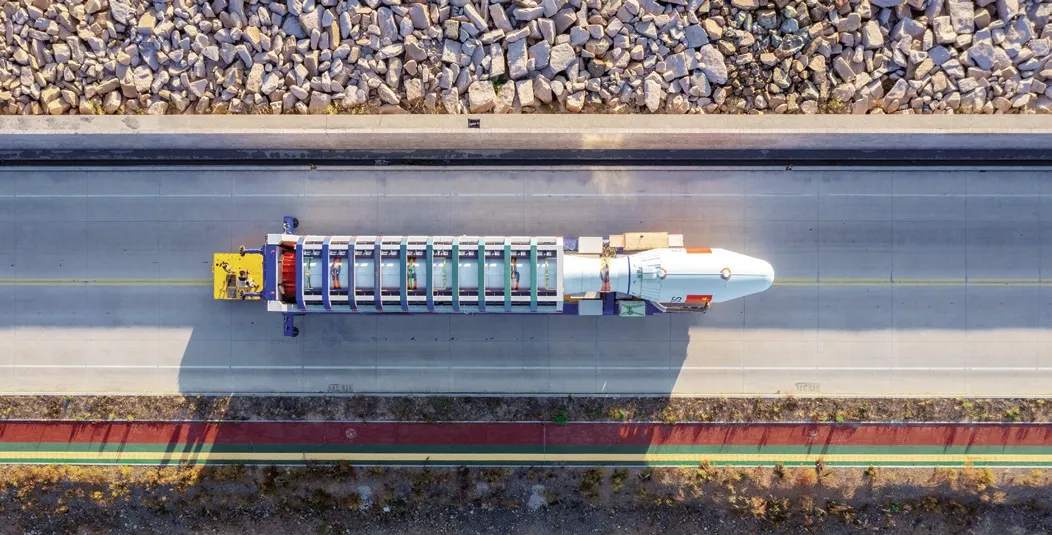
Figure 5 SD-3 carrier rocket

Figure 6 Six degrees of freedom motion of launch ship
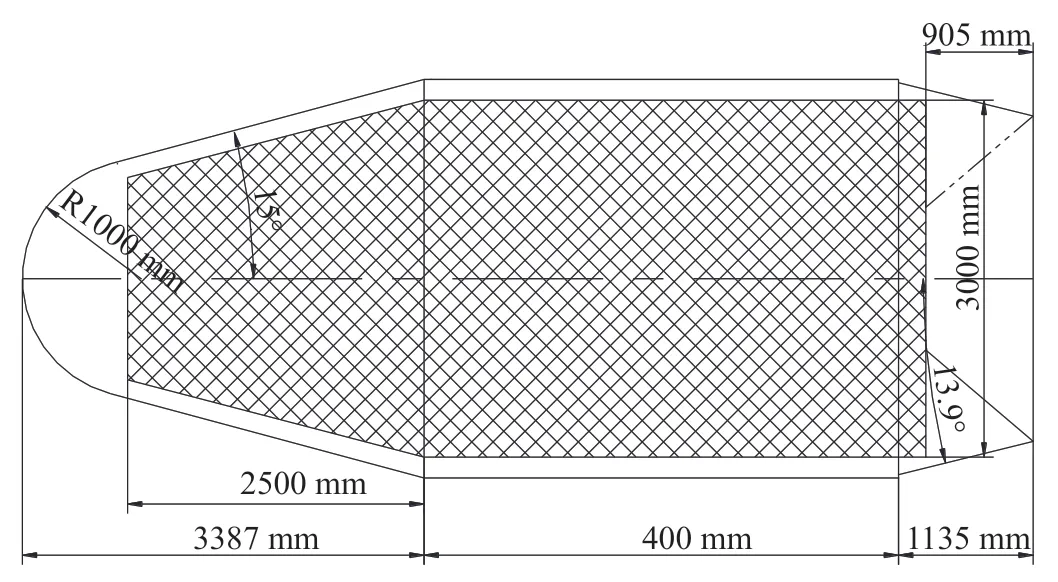
Figure 8 Fairing appearance and available envelope
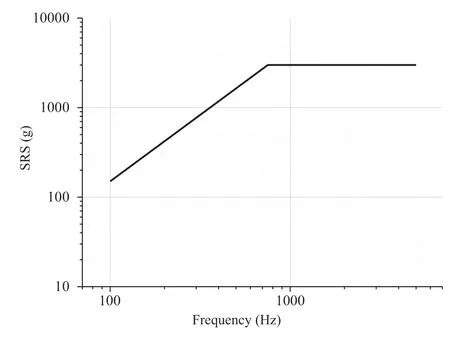
Figure 9 Shock response spectrum of the satelliterocket interface (Q=10)
Based on the above background,the Smart Dragon 3 (SD-3)launch vehicle was designed to meet the growing needs of launching satellites to low and medium orbits in the domestic market.On the basis of fully drawing on the mature technology and development capability of the Long March 11 (LM-11)launch vehicle,and thanks to the development of large solid motors,SD-3 was created as a highly cost-effective and reliable commercial launch vehicle with the ability of rapid performance and fast launch.Technological and economic integration enables the main workhorse competitive in the commercial market.On December 9,2022,the SD-3 launch vehicle accurately transferred 14 satellites into their scheduled orbits from the Yellow Sea.The maiden flight was a complete success,confirming the creation of a solid carrier rocket with the largest lift capacity,the largest fairing coverage and support both land and sea launches in China.It filled many technical gaps in China’s space industry and set new development records,injecting new vitality in building China a space power and creating new impetus for innovative research and development.
2 SYSTEM COMPOSITION
The SD-3 launch vehicle system consists of the carrier rocket and ground equipment.The carrier rocket adopts the connection of four solid motors in series and is composed of a power system,rocket structure,a control system,a measurement system,and a safe self-destruct system.Ground equipment is composed of a launch support system,a ground measurement,launch and control system,and supporting equipment.
The rocket adopts a mode of “three horizontals and one vertical”,namely horizontal assembly,horizontal testing,horizontal transportation,overall rocket erection and vertical thermal emmision.The rocket is thermal launched after erecting the integral rocket from horizontal to vertical,and can be adapted to both sea launch and land launch modes.The sea launch mode adopts the technical scheme of aiming while the rocket is in a horizontal state,overall rocket erection and vertical thermal launch using a guided erection bracket.The land launch mode can be realized without the guiding frame,but adding switching support,a rocket holding device,and a presetting blast diversion trough etc.
A mature barge was used as the launch ship for the maiden flight,with a main deck size of 111 m×79 m.The platform had been successfully used in many sea launch missions of LM-11.The launch ship is equipped with a launch platform,a launch control module,an erecting control module,an erecting oil source module and other equipment.There is also an integrated command and control cabin on a separate command ship.
The measurement and control scheme combining groundbased and space-based was selected for the maiden flight,enabling the acquisition of telemetry parameters of the whole rocket over the critical period.For the space-based tracking,China’s Tianlian relay satellite was used to obtain parameters from the separation of fairing to the separation of satellite and rocket[4].
3 OVERVIEW OF SD-3 PLAN
3.1 Rocket Dynamic Parameters and Main Technical Indicators
The SD-3 rocket uses four solid motors in series configuration with a total length of about 31 m and a total weight of about 140 t.The maximum diameter of the fairing is 3.35 m.The flight reliability of the rocket is no less than 0.94,and the launch reliability is no less than 0.9.
The diameter of the first stage motor is 2.64 m,the length is about 11 m,the charging capacity is about 70 t,the average ground thrust is about 200 t,and the rated operating time is 85 s.A composite shell,intermediate-performance propellant and full-shaft oscillating flexible nozzle scheme were adopted.Due to the utilization of technologies of the overall design of a large-thrust solid motor,large-diameter and high-bearing composite shell,large low-torque lightweight vector nozzle,and large-size solid motor charging,the motor performance has been significantly improved.Before the maiden flight,the motor completed several ground test runs,and operated normally with excellent performance[5].The motor performance reached the expected level on the maiden flight of the SD-3 launch vehicle.
The rocket’s carrying capacity and orbital insertion accuracy are shown in Table 1 and Table 2.The orbital insertion accuracy of the first flight mission has reached a 100-meter level.
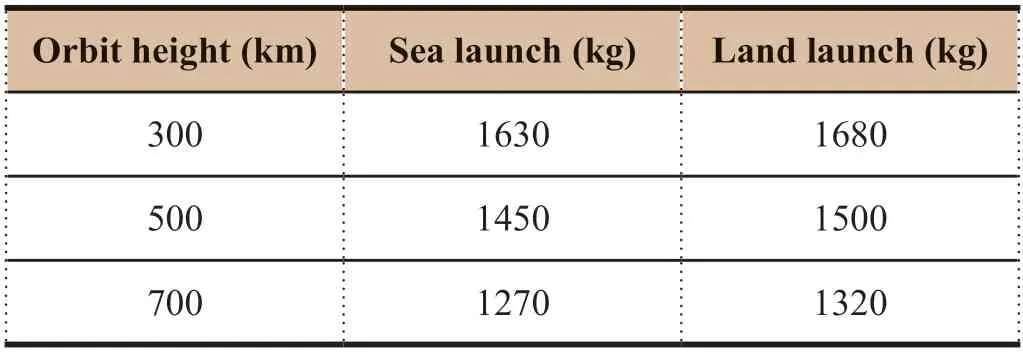
Table 1 Indicators of the carrying capacity of SD-3 to sun-synchronous orbit
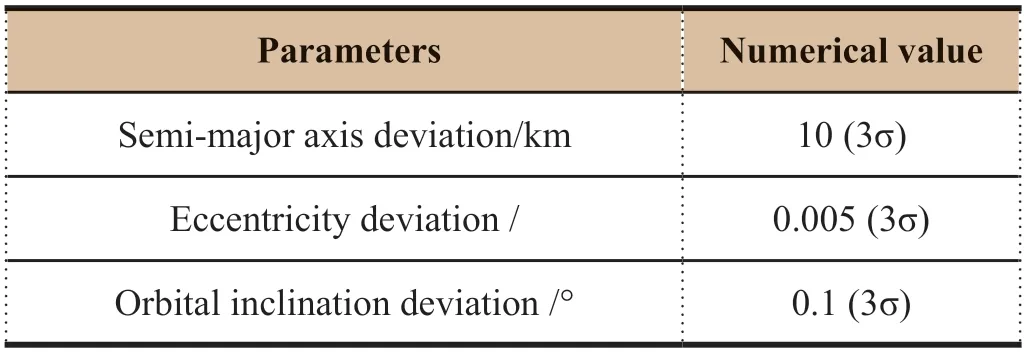
Table 2 Indicators of SD-3 orbital insertion accuracy
3.2 Scheme of each subsystem
In order to achieve the development goal of high reliability and low cost,the main motors of the first,second,third and fourth stages all use intermediate-performance propellant and the composite shell.Among them,the first-,second-and fourth-stage motors were newly developed products,while the third-stage motor was a derivative of mature products.The total charge capacity of the four motors was about 122.6 t.
In order to achieve easy maintenance and high reliability,the terminal-correction attitude control motor adopts a nitrogen constant pressure extruding single component system scheme,and the propellant is pre-packaged and delivered.Except the newly designed cable,other components use mature products or derivative improved designs,to comprehensively improve the technological readiness level of the system.
The rocket structure is composed of 9 sections.In order to compress the development cycle,reduce the development cost and improve the realization of the process,the tail section of the second stage and the following ones adopted a modular metal light cylinder structure. The fairing was adapted on the basis of the mature carrier rocket scheme.
There are five separations of the whole rocket,all of which adopt mature schemes and products,among which a thermal separation scheme is adopted for the first and second stages,a cold separation scheme is adopted for the second and third stages,and the third and fourth stages.The fairing separation is set after the third-stage motor ignition,and a spin-and-throw separation scheme is adopted.Explosive bolts and springs were adopted for the separation of satellites and the rocket or a separation device was provided within the design of the satellites themselves.The separation direction and order were designed to ensure no collision after separation,which is the same as the plan used for LM-11.
The control system was based on the mature technology of the LM-11 launch vehicle,and some single-units were upgraded by using the rocket-land integrated design scheme to meet the design requirements for miniaturization and low cost through an integration system design.It supports the remote control of universal laptops to realize a “one-button” launch.
The servo systems of all stages adopted highly reliable electromechanical servo solutions,using a product optimization design,structural optimization adjustment,component classification selection,test process optimization and other measures to achieve cost optimization enabling a highly dynamic and fast response capability.The first stage servo was an electromechanical servo with the highest voltage and of the highest rate of power in the domestic space field.
The measurement system adopted a ground-based 5 Mbps transmission rate while the space-based measurement was 2 Mbps enabling the realization of reliability of telemetry parameters.The rocket adopted highly integrated design of measurement equipment,which greatly reduced the system composition but has the ability to expand.The land side adopted integrated detection equipment to realize wireless data receive and send of ground-and space-based and external data,allowing more convenient operation.
The launch support system was composed of a launch platform,an erecting oil source cabin,an erecting control cabin,a launch bearing platform,a thermal protection shed,a platform transport vehicle and spender,etc.,which could adapt to both land launch and sea launch.In the first flight,the integrated erection of both the rocket and frame,the aiming of the rocket was horizontal and a vertical gas discharge frame guide were adopted.This scheme was the first in the world and was applied in practical engineering.
The ground measurement and launch control system comprises a front-end and a back-end equipment.The front-end equipment was deployed on the launch ship,and the back-end equipment was deployed on the command ship.Both of them are connected via wireless to complete the long-range test and launch control of the rocket.A large number of high-performance COTS equipment were selected for the command system,with 90% of electrical equipment being purchased from the general market.
4 DIFFICULTIES IN ROCKET SYSTEM DEVELOPMENT
4.1 Thermal Emission Control at Sea
As the rocket expels hot gases when makes thermal emissions at sea,first experience for China,one must take account of the fact the ship has many degrees of freedom such as sway,pitch,yaw,heave,roll and surge due to the action of waves,surges and wind during launch,while the rocket takes off slowly.This dynamic environment has a significant impact on the rocket’s vertical preparation and takeoff.In the launching process,the ground equipment will be subjected to a complex and harsh thermal environment,and the tail of the rocket may also be affected by the backsplash of the gas flow[6].Therefore,the design of the gas flow drainage and thermal protection is very important in the launching process.
To this end,the following work was carried out in view of the above problems.
1) In order to solve the problems of stability and safety during vertical launch preparation,ignition and takeoff of the rocket in the sea launch environment,an “adaptor+guideway guided thermal emission” scheme was determined after conducting trials and dynamic simulation analysis under various sea conditions.
2) According to the sequential process,key technologies such as those for the design for rocket stability and safety of launch,the design of structural stiffness and stability of launch platform,the design of gas flow drainage and thermal protection,and the analysis and evaluation of noise environment during the take-off of thermal launch were determined[7].
3) Multiple specific thermal emission reduction tests were carried out to verify the gas flow-drainage scheme,and to measure the thermal environment at the tail end of the rocket and at key positions where ground equipment was located.
4) The multi-round launch dynamics simulation and gas flow field simulation were carried out,and the safety,gas flow drainage and mechanical thermal environment of the rocket during takeoff were calculated and verified.The structural strength of the ground equipment was verified through an erection loading test of the launching platform and the loading test of the launching bearing platform.
4.2 “Big Hood” Configuration
When the rocket climbs through the transonic portion of the atmosphere,the variable cross-section will cause a pulsating pressure,which will affect the structure,equipment and control.The “Big hood and thin neck” configuration of the rocket creates significant unsteady aerodynamic effects,which exceeds the diameter ratio of the traditional design shape.In this configuration,the flow separation is in an unstable configuration,the flow separation phenomenon is relatively complex,of which there is no mature design method guidance and sufficient test data.Hence it was necessary to pay attention to the load,attitude control,mechanical environment and problems related to the pulsating pressure.One issue is aeroelasticity,including the design analysis of pulsating pressure,chattering load and the analysis of the adaptability of the structural system with load.The second is the problem of the noise environment,including the evaluation of noise environmental conditions,the analysis of the adaptability of key equipment to the noise environment,and the adaptive design of the control system.
To solve the above problems,the design from pulsating pressure to the buffeting load was completed,and the structural adaptability was analyzed.Moreover,the design from the pulsating pressure to the mechanical environment was completed,and then the control system adaptability analysis of all the designs and analysis work was completed.For pulsating pressure,the envelope design idea was proposed based on data analysis and the aerodynamic configuration to ensure the overall scheme remained a closed loop.Based on the Tianxun platform,a high-fidelity pulsating pressure simulation module was developed,and the results were applied to the analysis and design of the model.From the mechanism level,the risk was effectively eliminated.The buffeting load was calculated from the basis of the frequency domain calculation and time domain simulation.Based on the horizontal comparative analysis of similar data,combined with the pulsating pressure simulation data,the noise environment caused by the “Big hood” was evaluated.
4.3 System Integration Based on Technological and Economic Integration
Considerable innovative work on the overall design,product selection,test verification and supplier management was conducted,so as to effectively control the development cost of the commercial rocket and the total factor cost of a single-launch rocket[8].
To implement the concept of simple,general and efficient design,adoption of a modular design reduces the cycle and cost of product alignment,while realising the modular design of all the newly developed metal structure shell segments.Through the standard module cabin building blocks formation of the product shell segment was possible.The full implementation of task independent-based design greatly reduces the development cycle[9][10].
Pyrotechnic products,assembled direct parts,sensors,converters and other products strictly implement the requirements of productization,by using off-the-shelf products or making adaptive changes on the basis of mature products,realizing the transformation and application of mature technologies and products.Ground equipment (computer equipment,switching equipment,large screen equipment) adopted high-performance mature commercial equipment,reducing the development cost while ensuring the schedule of complete set.Then through the redundancy design to improve the reliability of the system,solving the issues with the traditional commercial equipment’s low reliability,poor adaptation to the environment and other problems.Due to the purchase of large quantities of commercial equipment and standardized equipment,a product classification system and differentiated quality control measures were established to achieve cost reduction and improve efficiency through fine management.
5 INTERFACE WITH SATELLITE SYSTEM
The SD-3 rocket has a 3.35 m fairing where the available envelope is shown below.
The ultimate overload coefficient at the satellite-rocket interface is shown in Table 3.

Table 3 Overload coefficient at the satellite-rocket interface
Sinusoidal vibration (zero peaks) at the satellite-rocket interface is shown in Table 4.
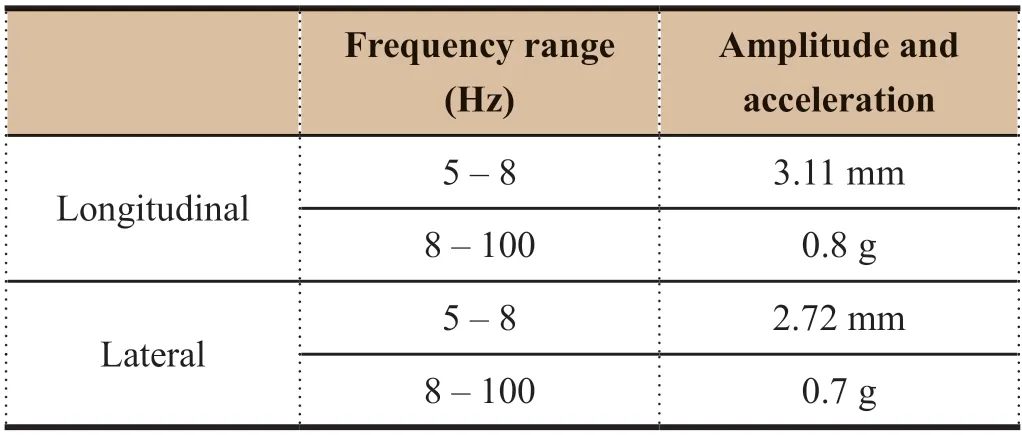
Table 4 Sinusoidal vibration parameters
The random vibration is mainly caused by rocket flight noise,and its power spectral density is shown in Table 5.The total mean root square is 5.0 g.

Table 5 Three-direction random vibration
The most severe noise vibration occurs during take-off and transonic flight segments,and the maximum noise value in the fairing is shown in Table 6.

Table 6 Fairing noise
For the point-connected satellite-rocket interface,the maximum impact caused by the pyrotechnics unlocking on the satellite occurs at the moment of satellite and rocket separation.The impact environment caused by the rocket at the plane of satellite-rocket separation does not exceed the values in Table 7.
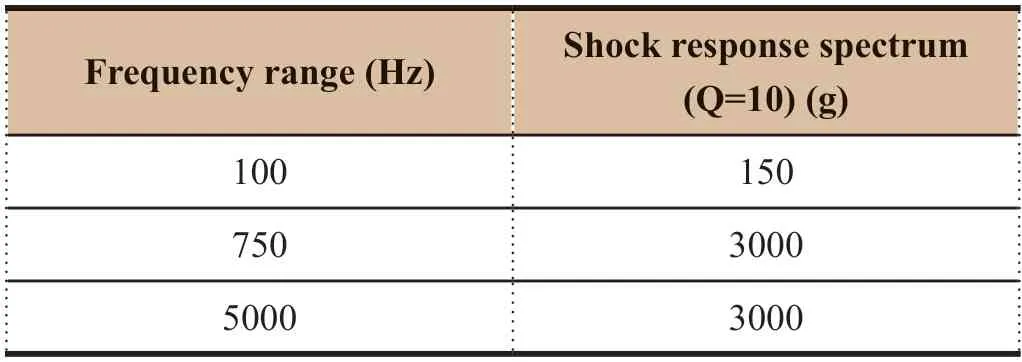
Table 7 Impact parameters of the rocket separation surface
6 CONCLUSION
This paper introduced the basic scheme of the SD-3 rocket,discussed the problems solved in the development process,and proposed relevant interfaces between the rocket and the satellite system.The SD-3 launch vehicle was developed in less than 20 months from start to the first launch.A new mode for the development of commercial space products was actively explored and practiced in the process of SD-3 development,and a flagship product of the “national team” in the commercial space field has been created,injecting new momentum in building China into a space power.
As the developer of the SD-3 carrier rocket,we would like to work together with all users to actively promote the launch market for low-and medium-orbit satellites and jointly promote the development of China’s commercial space sector.In the future,a larger-scale solid-fuel rocket will be developed according to the market demand and larger-scale solid motors,so as to improve the spectrum of China’s solid carrier rocket.
杂志排行
Aerospace China的其它文章
- Transportation of the Kinetica-1 Carrier Rocket
- Development Status and Main Application Progress of the Kinetica-1 Solid Launch Vehicle
- Development Status and Prospects of Solid Rocket Motor Technology for Large Launch Vehicles
- Research on Key Technologies for Reusable Liquid Rocket Engines
- Psychological Issues in Simulated Space Missions: What We Learn From Chinese Crew
- Design and Application of Cloud Test Platform for Launch Vehicle Electrical System Based on Data-Driven Approach
